In order to make e2e tests on bitbucket pipelines, I've to make some changes to bitbucket-pipelines.yml, package.json and protractor.conf.js.
Firstly, bitbucket-pipelines.yml looks like this. We used the docker image provided by adrianmarinica instead of the default node image.
# You can specify a custom docker image from Docker Hub as your build environment.
image: adrianmarinica/bitbucket-pipelines-protractor
pipelines:
branches:
master:
- step:
caches:
- node
script:
- npm install
- npm start
- protractor protractor.conf.js
Then, package.json looks like this
"scripts": {
...
"start": "ng serve &"
...
}
The key change here is the "&" in the start command. This will run ng serve in background, allowing the protractor command to get fired.
Finally, some tweaks to the protractor.conf.js
const { SpecReporter } = require('jasmine-spec-reporter');
exports.config = {
allScriptsTimeout: 1800000,
specs: [
'./e2e/**/*.e2e-spec.ts'
],
getPageTimeout: 120000,
capabilities: {
'browserName': 'chrome',
'chromeOptions': {
'args': [
'--no-sandbox',
'--disable-gpu'
]
}
},
useAllAngular2AppRoots: true,
directConnect: true,
baseUrl: 'http://localhost:4200/',
framework: 'jasmine',
jasmineNodeOpts: {
showColors: true,
defaultTimeoutInterval: 120000,
print: function () { }
},
beforeLaunch: function () {
require('ts-node').register({
project: 'e2e/tsconfig.e2e.json'
});
},
onPrepare() {
jasmine.getEnv().addReporter(new SpecReporter({ spec: { displayStacktrace: true } }));
}
};
If your tests run succesfully locally, they also should in the pipelines, as per this configurations, the environment should be the same.
